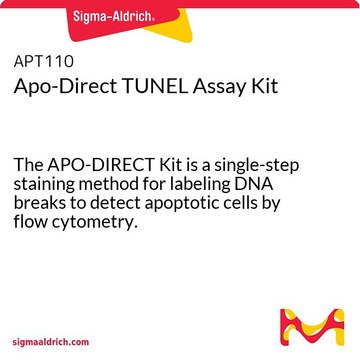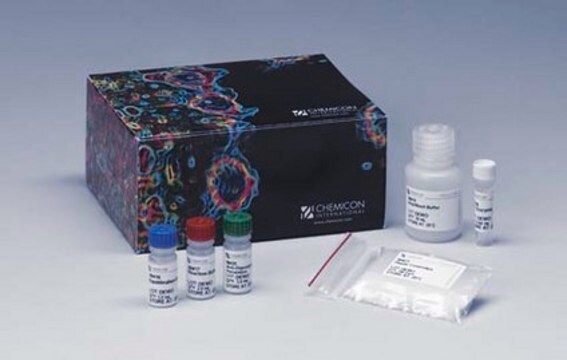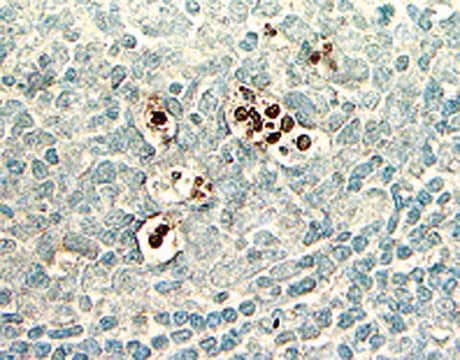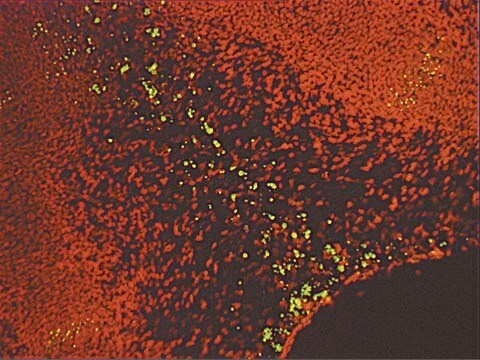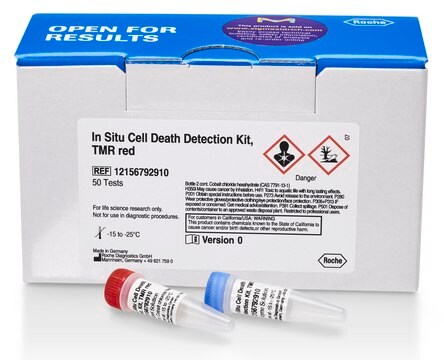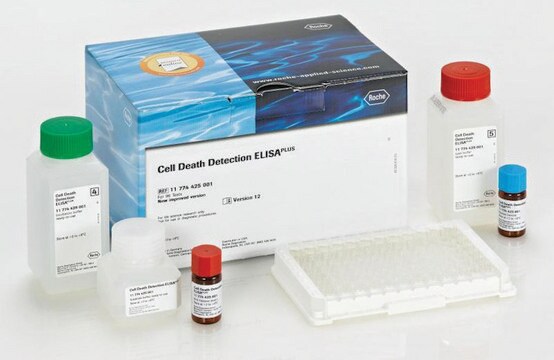QIA33
FragEL DNA Fragmentation Detection Kit, Colorimetric - TdT Enzyme
Sinónimos:
TUNEL Assay
About This Item
Productos recomendados
uso
sufficient for 50 tests
Nivel de calidad
reactividad de especies (predicha por homología)
all
fabricante / nombre comercial
Calbiochem®
condiciones de almacenamiento
OK to freeze
técnicas
microbe id | specific enzyme detection: suitable
entrada
sample type paraffin section(s)
sample type frozen section(s)
sample type fixed-cell preparation(s)
método de detección
colorimetric
temp. de almacenamiento
−20°C
Descripción general
Componentes
Advertencia
Principio
Nota de preparación
Almacenamiento y estabilidad
Otras notas
Gu, Y., et al. 1994. Endocrinology135, 1272.
Gavrieli, Y., et al. 1992. J. Cell Biol.119, 493.
Fawthrop, D. J., et al. 1991. Arch. Toxicol.65, 437.
Martin, S.J., et al. 1990. J. Immunology145, 1859.
Wyllie, A. H. 1980. Nature284, 555.
Kerr, J. F. R., et al. 1972. Br. J. Cancer26, 239.
Información legal
Palabra de señalización
Danger
Frases de peligro
Consejos de prudencia
Clasificaciones de peligro
Acute Tox. 4 Inhalation - Acute Tox. 4 Oral - Aquatic Chronic 2 - Carc. 1B - Eye Dam. 1 - Muta. 2 - Ox. Liq. 3 - Skin Irrit. 2 - Skin Sens. 1 - STOT RE 2 Inhalation
Órganos de actuación
Respiratory Tract
Código de clase de almacenamiento
5.1B - Oxidizing hazardous materials
Certificados de análisis (COA)
Busque Certificados de análisis (COA) introduciendo el número de lote del producto. Los números de lote se encuentran en la etiqueta del producto después de las palabras «Lot» o «Batch»
¿Ya tiene este producto?
Encuentre la documentación para los productos que ha comprado recientemente en la Biblioteca de documentos.
Nuestro equipo de científicos tiene experiencia en todas las áreas de investigación: Ciencias de la vida, Ciencia de los materiales, Síntesis química, Cromatografía, Analítica y muchas otras.
Póngase en contacto con el Servicio técnico
